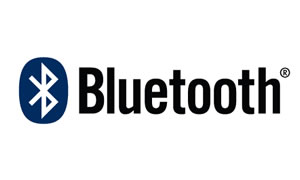
Nokia is in the advanced stages of development work on a new ultra low power short-range wireless technology, similar to Bluetooth, to connect devices such as watches and heart monitors.
An agreement to use the Nokia technology as the basis for an ultra low-power Bluetooth standard should help to speed its use and acceptance - rather than be a competing technology, the Bluetooth SIG industry interest group said.
Michael Foley, executive director of the Bluetooth SIG, said product developers had been calling for an ultra low power standard, which should now be finalised in about a year.
"I would see the products coming relatively quickly after the specs are done," he said.
The Wibree short-range radio link -- likely to be marketed as ultra low power Bluetooth -- uses just a fraction of the power of earlier systems and can hook up devices with small batteries or power capacity.
That could allow links for toys, sports monitors and watches, as well as sensors used in health monitoring, which have not been able to use Bluetooth until now because of its power demands.
Nokia has been working on Wibree since 2001. The technology provides a radio link of up to 10 meters (30 feet) between devices.
Sign up today and you will receive a free copy of our Future Focus 2025 report - the leading guidance on AI, cybersecurity and other IT challenges as per 700+ senior executives
Harri Tulimaa, head of Nokia's technology outlicensing, said the deal should result in a new open market for devices that can communicate with each other, as well as with mobile phones, which are the main users currently of Bluetooth technology.
"The capability of addressing and connecting low power devices should actually also bring a boost to the traditional Bluetooth," Tulimaa said.
He said the Finnish-based mobile company had been somewhat over-optimistic when it said last October that it expected the first commercial version of the standard to be ready in the second quarter of this year.
And while developing the technology as a Bluetooth standard could take a bit longer, it would help the standard to be accepted.
"I think we will see some evolution in the industry in the coming few years in the area of ultra low power," Tulimaa said, adding that the industry had not accepted earlier proprietary technology in that field.
First to come were likely to be devices with only ultra low power versions, followed by some which combine both Bluetooth wireless connections.
Jari Honko, analyst at eQ Bank in Helsinki, said Nokia appeared willing to share some ideas "in order to avoid fragmentation of that particular market."
"It seems Nokia sees it as wise not to keep some technology for itself, (avoiding the) danger that some competing company should create some competing technology," Honko said.
Bluetooth is mostly used to link phones with headsets, computers and printers to transfer calls, calendar items, documents, songs and pictures. It was invented by Ericsson in the 1990s and subsequently given to the market as an open standard.
While Bluetooth operates with ultra high frequencies above 6 gigahertz for faster connections, Wibree is intended to operate in the 2.4 gigahertz band, and the two would be able to work in parallel.
ITPro is a global business technology website providing the latest news, analysis, and business insight for IT decision-makers. Whether it's cyber security, cloud computing, IT infrastructure, or business strategy, we aim to equip leaders with the data they need to make informed IT investments.
For regular updates delivered to your inbox and social feeds, be sure to sign up to our daily newsletter and follow on us LinkedIn and Twitter.
-
 I couldn’t escape the iPhone 17 Pro this year – and it’s about time we redefined business phones
I couldn’t escape the iPhone 17 Pro this year – and it’s about time we redefined business phonesOpinion ITPro is back on smartphone reviews, as they grow more and more intertwined with our work-life balance
-
 When everything connects, everything’s at risk
When everything connects, everything’s at riskIndustry Insights Growing IoT complexity demands dynamic, automated security for visibility, compliance, and resilience

